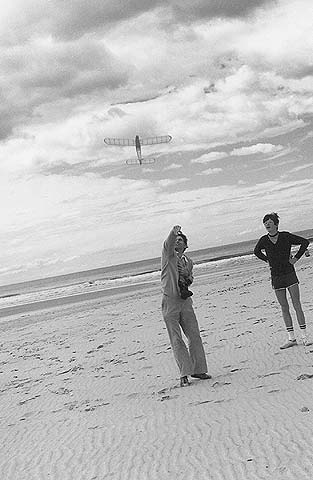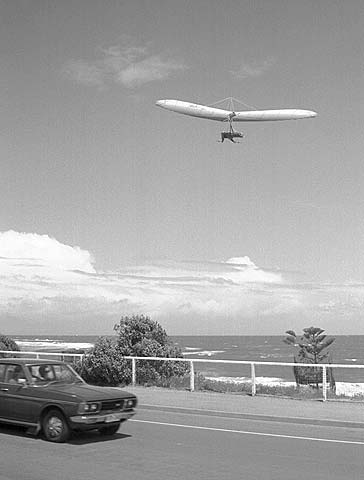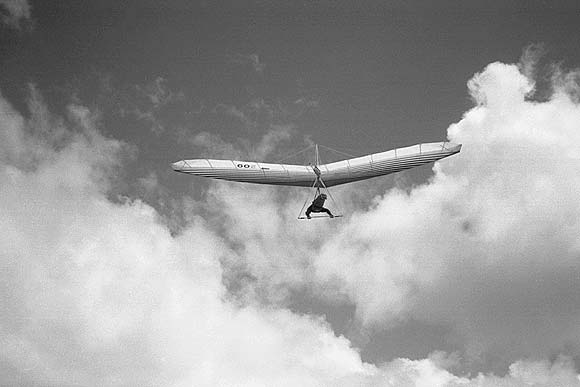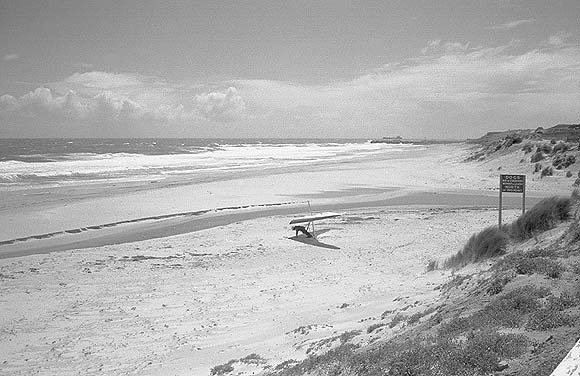
| Prev |
| I was just watching some bees flying around in a flowery bush at the beach. The bush, with all its stems and leafy protrusions is just like a three-dimensional maze and obstacle course. Yet the bees fly in and out and through it, seemingly to get to any flower they desire, with no trouble at all. They move with very quick comprehension of the three-dimensional structures around them. And what an adventure it would be to suddenly lower oneself (with the aid of wings like theirs) down through structures such as found within this bush – complex forms with openings and overlapping plates all around. The whole bush is alive with insects: ants, beetles, bees, flies, and many other types. And now, just looking up to the wider world of the ocean and the sky, I see a few seagulls gliding along the waterfront (gracefully, effortlessly, beautifully smoothly). Their heads move seemingly independently of their gliding body mass, scanning the landscape below them, and the space all around them. What a vantage point! What a marvellous capability they have being able to fly! A few strokes of their wings and they turn a little out to sea, lifting higher. Then they turn back again. Imagine being in their position, floating above the ground at various heights, feeling the air’s every quality. The sense of spectacle and freedom must be unsurpassed. They don’t need machines other than their own bodies to achieve and experience such masterly flight. I can see an aircraft that has just taken off, climbing out over the sea. How clumsy, unsubtle, how restricted and diabolical it looks in comparison with the gulls. When gulls take off, you can feel the strength and the power and the effort (not that it looks to be on the limit of their power). Their bodies flex and surge – so graceful and so much more inspiring. A pair of gulls rise beautifully up into view over the beach grasses. Their paths are smooth, totally controlled, and in ‘formation’ with one another. Three gulls now fly overhead. One glides slowly away from the other two, who now curve gently out towards the sea. I feel so uplifted by their flying. Sometimes, if I apply myself, I can feel a part of their flight, and appreciate their flight almost as if I was the one doing the flying. |

|

| Back in about 1980, my Dad launches one of my youngest brother's model aircraft on a beach near North Haven on the mid-northern NSW coast. I grew up making and flying model aircraft, like this one. When one launches a model aircraft, one often projects oneself into the aircraft to experience the flight. Imagination makes it possible. |

| While I was living at Christies Beach (1986 - 1987), I saw a man gliding close to my home in a hang-glider. He was flying along the small coastal ridge, using the small amount of upwardly moving air to stay airborne. Luckily, I had film in my camera, ready to take a few photos. I thought then that hang-gliders could provide people with the closest real experience to the gliding aspect of bird-like flight. |

| The hang-glider was expertly worked, up to quite a height. All steering and changing of pitch is achieved by the pilot moving their body weight forwards, backwards, left, or right. Notice that the wing is travelling a little towards the right, and the pilot's legs have been swung towards the right, giving the impression that the pilot is moving towards the left (but they are actually initiating a right hand turn). |

| The hang-glider pilot was exhausted after about 40 minutes of flying. He took a well-earned break, and then launched himself again from the top of the coastal ridge for another session. |
| Prev |